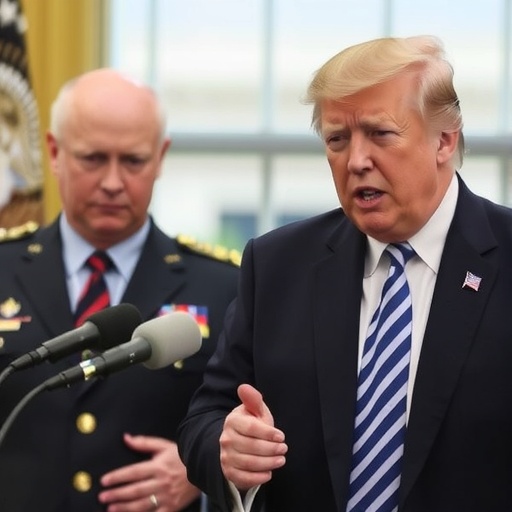In a dramatic escalation of tensions with Moscow, the Trump administration has slapped fresh US sanctions on Russia’s powerhouse oil companies, Rosneft and Lukoil, just days after a highly anticipated second summit on ending the Ukraine war fell apart. The move, announced late Thursday, targets the financial and operational lifelines of these energy behemoths, aiming to squeeze Russia’s war machine amid stalled peace talks.
- Collapsed Summit Ignites Washington’s Hardline Stance
- Unpacking the Sanctions: Freezes, Bans, and Broader Repercussions for Rosneft and Lukoil
- Zelensky Hails ‘Big Step’ While Demanding Full Russian Oil Crackdown
- Global Energy Markets Brace for Turbulence from Russian Oil Squeeze
- Escalation Risks and Pathways to Renewed Diplomacy
Collapsed Summit Ignites Washington’s Hardline Stance
The decision to impose these US sanctions comes on the heels of the abrupt abandonment of plans for a second US-Russia summit focused on de-escalating the Ukraine conflict. Initially teased as a potential breakthrough following the first Trump-Putin meeting earlier this year, the summit was meant to build on fragile diplomatic threads. However, sources close to the negotiations reveal that deep-seated disagreements over territorial concessions and military withdrawals derailed the process. Russian officials, according to a leaked State Department memo, demanded Ukraine’s neutrality in NATO matters—a non-starter for Kyiv and its Western allies.
President Donald Trump, speaking from the White House Rose Garden, framed the sanctions as a necessary response to ‘Putin’s gamesmanship.’ ‘We came to the table in good faith, but Russia chose aggression over peace,’ Trump stated, emphasizing that the US sanctions on Rosneft and Lukoil would ‘hit them where it hurts—their oil profits that fund this senseless war.’ This marks a pivot from the administration’s earlier optimism about direct diplomacy, underscoring the fragility of US-Russia relations under the Trump administration.
Historical context adds weight to this development. Since Russia’s full-scale invasion of Ukraine in February 2022, the US has layered on multiple rounds of sanctions, but these latest measures under the Trump administration zero in on the energy sector with renewed vigor. Rosneft, Russia’s largest oil producer, and Lukoil, a key player in refining and exports, have long been on the periphery of restrictions. Now, they’re squarely in the crosshairs, reflecting a strategic shift as peace prospects dim.
Unpacking the Sanctions: Freezes, Bans, and Broader Repercussions for Rosneft and Lukoil
The new US sanctions on Rosneft and Lukoil are multifaceted, designed to disrupt their global operations and revenue streams. According to the Treasury Department’s Office of Foreign Assets Control (OFAC), the measures include full asset freezes for US-based entities linked to the companies, prohibitions on new investments, and bans on transactions involving their debt or equity. For Rosneft, which boasts proven reserves of over 45 billion barrels of oil equivalent and annual production exceeding 5 million barrels per day, this could mean severed ties with Western partners and technology suppliers.
Lukoil, the second-largest Russian oil producer with operations spanning 18 countries and refining capacity of 1.7 million barrels per day, faces similar hurdles. The sanctions explicitly target its international subsidiaries, including those in Europe and Asia, potentially halting joint ventures worth billions. ‘These aren’t just slaps on the wrist; they’re chokeholds on cash flow,’ said energy analyst Dr. Elena Petrova of the Brookings Institution. Petrova highlighted that Rosneft’s 2023 revenues topped $100 billion, much of it from oil exports, while Lukoil reported $80 billion—figures now at risk of plummeting.
Under the Trump administration, these US sanctions build on existing frameworks like the 2022 Russian Harmful Foreign Activities Sanctions but introduce secondary penalties. Any non-US company dealing with Rosneft or Lukoil could face exclusion from the American financial system, a deterrent that has already prompted warnings from major banks like JPMorgan Chase. Statistics from the International Energy Agency (IEA) underscore the stakes: Russian oil exports, dominated by these firms, accounted for 7.5 million barrels per day in 2023, supplying 8% of global demand. Disruptions here could ripple through supply chains, though Moscow’s pivot to buyers in India and China might blunt some immediate pain.
- Key Targets: Rosneft’s upstream exploration units and Lukoil’s downstream refining networks.
- Financial Impact: Estimated $20-30 billion in frozen assets worldwide.
- Tech Restrictions: Bans on US-origin drilling equipment, critical for Arctic projects.
Industry insiders note that while Rosneft, state-controlled and led by loyalist Igor Sechin, has weathered prior storms through shadowy dealings, Lukoil’s more independent stance—its board once urged an end to the war—might make it more vulnerable. CEO Vagit Alekperov, now under personal sanctions, has publicly distanced the company from politics, but that hasn’t shielded it from Washington’s reach.
Zelensky Hails ‘Big Step’ While Demanding Full Russian Oil Crackdown
Ukrainian President Volodymyr Zelensky wasted no time in responding to the Trump administration’s announcement, labeling the US sanctions on Rosneft and Lukoil as ‘a big step forward in holding Russia accountable.’ In a video address from Kyiv, Zelensky praised the move as evidence of unwavering Western support amid Ukraine’s grueling defense against Russian advances. ‘This pressure on Russian oil is vital—it starves the Kremlin’s war chest,’ he said, referencing how oil revenues have financed over 40% of Moscow’s military spending since the invasion began.
Yet Zelensky’s endorsement came with a pointed call for escalation. He urged the US and its allies to expand sanctions to encompass all major Russian oil entities, including Gazprom Neft and Surgutneftegas, which together control nearly 80% of the country’s production. ‘Half-measures won’t end this war; we need a total embargo on Russian oil to force Putin’s hand,’ Zelensky emphasized during a joint press conference with European leaders. His comments echo ongoing frustrations in Kyiv, where US aid packages have been a lifeline but diplomatic breakthroughs remain elusive.
Behind the scenes, Zelensky’s team has lobbied intensely. Diplomatic cables reviewed by Reuters indicate that Ukrainian envoys met with Trump administration officials last week, presenting data showing Russian oil exports evading sanctions via ‘shadow fleets’ of tankers—over 600 vessels rerouting crude to non-Western markets. Zelensky’s push aligns with broader EU efforts, where leaders like Germany’s Olaf Scholz have signaled readiness for synchronized actions, potentially amplifying the impact of these US sanctions.
Public sentiment in Ukraine reflects cautious optimism. A recent poll by the Kyiv International Institute of Sociology found 72% of respondents viewing the sanctions positively, though 58% believe more comprehensive measures are needed to tip the scales. Zelensky’s rhetoric also serves a domestic purpose, bolstering morale as Russian forces intensify assaults in the Donbas region.
Global Energy Markets Brace for Turbulence from Russian Oil Squeeze
The imposition of these US sanctions on Rosneft and Lukoil is set to send shockwaves through global energy markets, already volatile from geopolitical strife and OPEC+ maneuvers. Oil prices surged 3% in after-hours trading following the announcement, with Brent crude hovering near $85 per barrel. Analysts at Goldman Sachs project that if secondary sanctions deter third-party buyers, Russian exports could drop by 1-2 million barrels per day, tightening supply and potentially pushing prices toward $100 by mid-2024.
For Europe, heavily reliant on alternative supplies post-Nord Stream sabotage, the news is a double-edged sword. While curbing Russian oil inflows aligns with diversification goals—EU imports from Russia fell 90% since 2022—the higher costs could exacerbate inflation. The European Commission estimates that full sanctions on all Russian oil could add €20 billion annually to energy bills for member states. In Asia, where India has snapped up discounted Russian crude (importing 1.8 million barrels daily from Rosneft and Lukoil sources), compliance fears might reshape trade flows.
The Trump administration’s strategy also intersects with domestic US priorities. With American shale output at record 13 million barrels per day, the sanctions position the US as a swing supplier, potentially boosting exports to allies. However, critics like Senate Foreign Relations Committee Ranking Member Bob Menendez warn of unintended consequences: ‘Hitting Rosneft and Lukoil hard is right, but without global buy-in, we’re just enriching shadow traders.’
Environmental angles add another layer. Greenpeace activists hailed the move, noting that Rosneft’s Arctic drilling plans, now hampered by tech bans, could prevent up to 1.5 billion tons of CO2 emissions over the next decade. Yet, the shift to dirtier alternative sources elsewhere risks offsetting these gains, per a UN Environment Programme report.
- Short-Term Price Spike: Expect 5-10% volatility in coming weeks.
- Supply Chain Shifts: Increased US and Saudi output to fill gaps.
- Corporate Fallout: Lukoil shares dipped 4% on the Moscow Exchange.
Broader economic data from the World Bank suggests that sustained pressure on Russian oil could shave 1.5% off Moscow’s GDP growth in 2024, compounding the ruble’s 15% depreciation since the summit’s collapse.
Escalation Risks and Pathways to Renewed Diplomacy
As the dust settles on this latest salvo in US-Russia economic warfare, eyes turn to what comes next. The Trump administration has signaled openness to dialogue if Moscow shows concessions, but Kremlin spokesman Dmitry Peskov dismissed the sanctions as ‘economic terrorism,’ vowing retaliatory measures like export curbs on rare earth metals vital for US tech industries. With Russian oil revenues under siege from these US sanctions on Rosneft and Lukoil, Putin may double down on alliances with China and Iran, potentially forming a counter-sanctions bloc.
For Ukraine, the path forward hinges on allied unity. Zelensky’s call for blanket coverage on all Russian oil players could materialize at the upcoming G7 summit in Italy, where leaders are drafting a $50 billion loan backed by frozen Russian assets. Meanwhile, intelligence reports suggest Moscow is accelerating domestic refining upgrades to bypass export bans, a process that could take 12-18 months but sustain war funding in the interim.
Longer-term, experts foresee a reconfiguration of global energy geopolitics. The Atlantic Council predicts that by 2025, non-Russian oil could dominate 70% of European imports, accelerating the green transition. Yet, escalation remains a wildcard: if sanctions provoke cyber retaliation or hybrid threats, the Trump administration might invoke broader national security powers. As one senior State Department official put it anonymously, ‘This is pressure cooking—hoping it forces peace, but ready if it boils over.’ The world watches, balancing hope for de-escalation against the specter of prolonged conflict.









